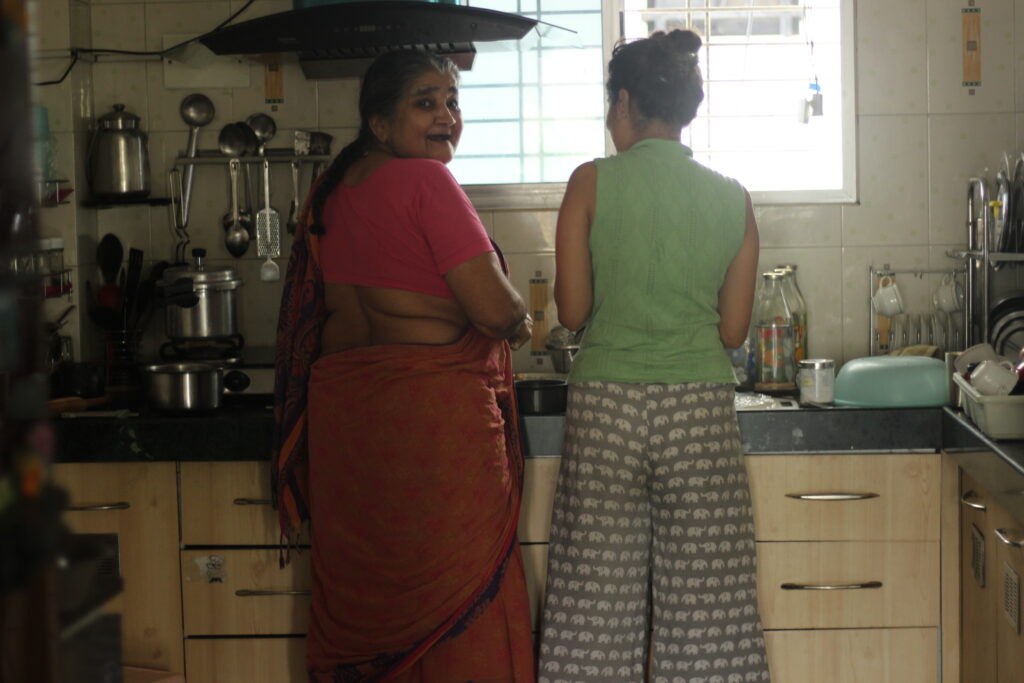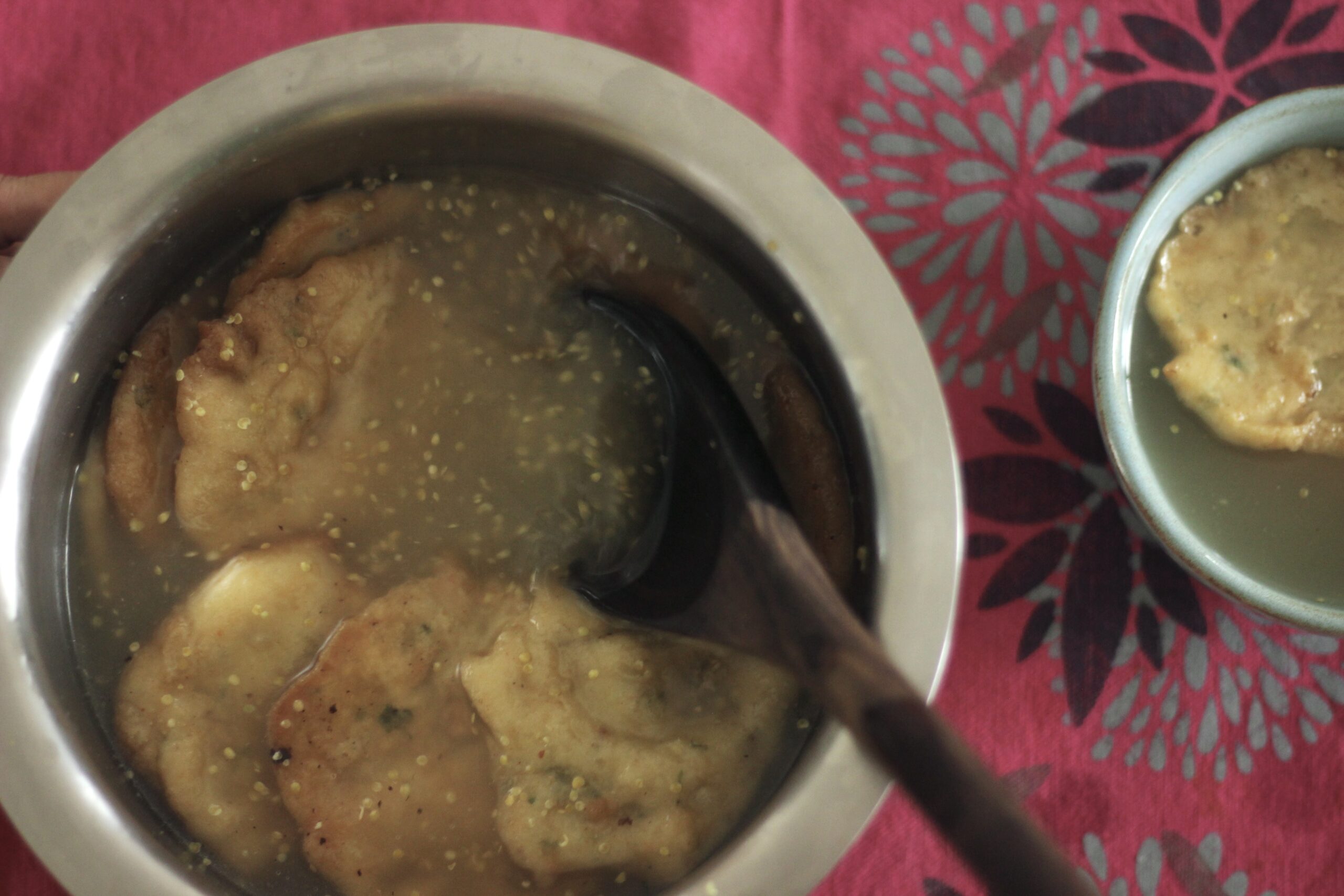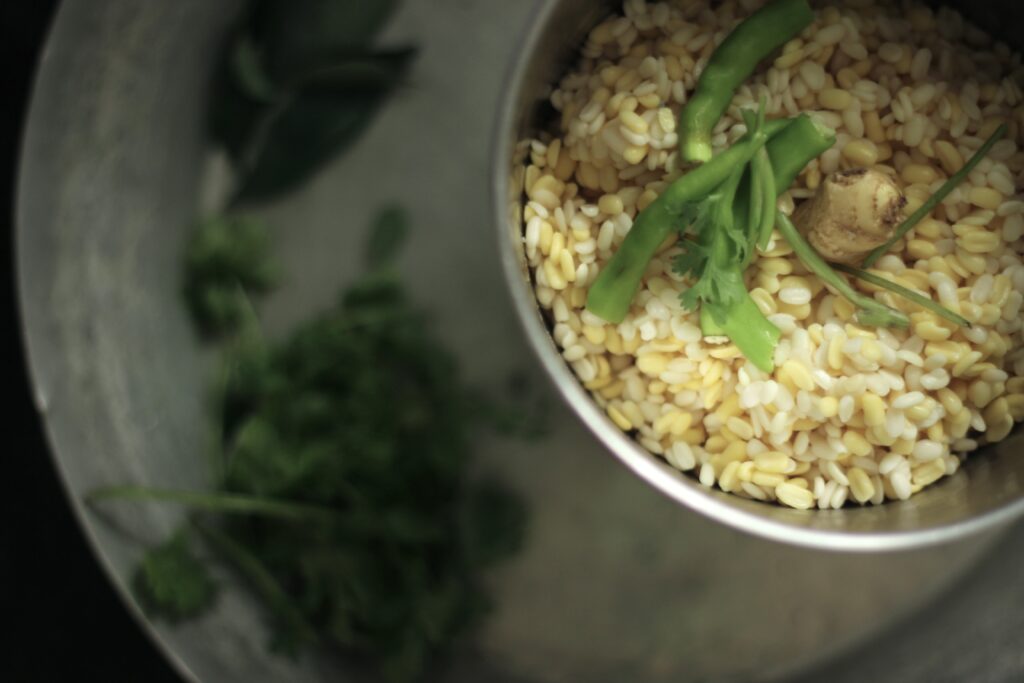I got introduced to Kanji-wada around 10 years ago on Holi. I was at a friend’s place and they were serving Kanji-wadas. Usually, I avoid sour food due to some health restrictions, but the moment I ate one Wada, I knew I needed more. Karwaji understood before being told and got me 2. I 6, if not more, wadas that day and drank a lot of sour water.
Since then, every time Karwaji’s mom made Kanji-wada, she would invite me, be it for Birthdays or Holi celebration. It is Karwaji’s favorite too.
We were already very close as friends, and now we had a special something- food and ritual- added to our friendship.
Due to the pandemic, I couldn’t eat them this year, but I am craving it. So I would love for you to make Kaanji-wada. And if you tell us the recipe, it will be more fun. I would send a pic to Karwaji too.
PS- I think you should share your food and experience/memories related to it with us too.

My experience making, eating and feeding Kanji-wada
- I had a feeling that dadi would be interested in making Kanji-wada. Usually, I would elude or deter her from meddling. But this time I thought of working with her. She called all our relatives to figure out the recipe for the best Kanji-wadas. The one we used is an amalgamation of all.
- Dadi and all her children are despotic rulers. They cannot give up the driver’s seat and they are the worst delegators. So working with dadi is tough, but she is also the funniest person I know. So I used humor to get my way with my family.
We couldn’t get the wadas to be flat circles. They kept trying to be spherical. We tried using plastic, different hand techniques, and finally settled on a slow, energy-consuming jugaad technique. Dadi couldn’t stop giggling. She told me some stories that she used to tell me when I was little. I would make her repeat them until I fell asleep. Somehow they are all related to food. - The Kanji-story came to me through Adrija, who discussed Via Dil with her family over lunch. She tells me that her father loved the idea of the project and asked for me to make and share Kanji-wada. He asked for the recipe, so he could make it too! The string of messages was so warm, I had to read and reread it to believe it. While in the kitchen, dadi told me she has a food story that she would like shared. Via Dil has crossed generations. I was so touched that I couldn’t decide if I wanted to grin or weep, so I just hid in my blanket like the adult that I am.
- My heart melted all over again when I posted the story. I shall be making and talking about my favorite food and memories because uncle asked 🙂
I discovered Kaanji wada when I came to Amravati. Papa was partly raised here and insisted that he knew the best place for wadas. I didn’t care for it. My strategy with any new place we move to is not getting familiar and attached, so it dosen’t hurt when you leave. But in Amravati, papa stayed. I moved to Pune, but came back home here from college, new college, job and freelancing, for 3 years, then 6, 9, now 12. It was after Mumma papa had spent 7 years here that I started telling people I am from Amravati instead of ‘nowhere really, we move around a lot mumble mumble”
It was the first time in any of our lives that we had stayed in one place for so long. As the years passed, we understood the comfort of sameness and belonging increased. I accepted Amravati in a long term, not scared of abandonment sort of way. I can now be found defending it, telling people exactly where to turn to find the shop that sells the best stationery. I had tasted Kanji-wada before but got to know it 2 years ago too. In research, I found out that it is originally a delicacy from Rajasthan, but if anyone was to ask me, I am going to say Amravati.
Recipe
For the dip
- water
- yellow mustard seeds – 2 tsps
- curd – 2 tsps
- oil/ghee – 1 tsp
- hing – 1/4 tsp
- salt for taste
For the wada
- Moong dal – 1/3 cup
- Urad dal – 1/3 cup
- Curry patta
- Green chilli – 2
- Ginger – 1 inch
- Coriander
- Red chilli powder
- Salt for taste
- Baking soda – 1/4 tsp
- Oil to fry
- Water to soak
Process
Fot the dip
- Take the yellow mustard, curd and a little water in a big plate
- Rub the mixture with your palm, as if to massage it, for 10 minutes
- Add the rest of the water
- Put a deep dish to heat and add ghee/oil
- Keep a fitting lid ready for the next step
- When the ghee/oil heats, add hing to it, mix, add the water mix to this and turn the gas off and cover with the lid. This has to be a fast move because we need the hing steam to stay in the water
- Put to side
For the wada
- People take different proportions of moong and urad dal to make the wadas. I used a 1:1 ration. Soak the dal in water for 2 hours
- When the dal is soaked, drain it and put it in a mixer container
- Add garlic and green chili. Grind till it becomes a smooth paste. We don’t want any lumps
- Now add red chili powder, salt, baking soda, chopped coriander and curry patta to the paste and mix
- Heat oil on a medium flame for frying
- Put a dollop of the paste in it. It should rise and start frying without becoming brown
- Fry it till it becomes brownish, just a shade above golden
- When all the wadas are done frying, heat water in pan till it is luke warm
- Add wadas to the lukewarm water and soak for 2 minutes
- Take the wada out one by one and add to the dip
- Cool before eating. Kanji wadas taste better when left to ferment for a few hours




